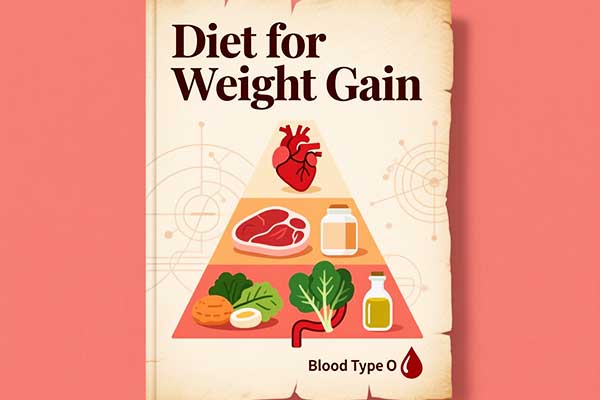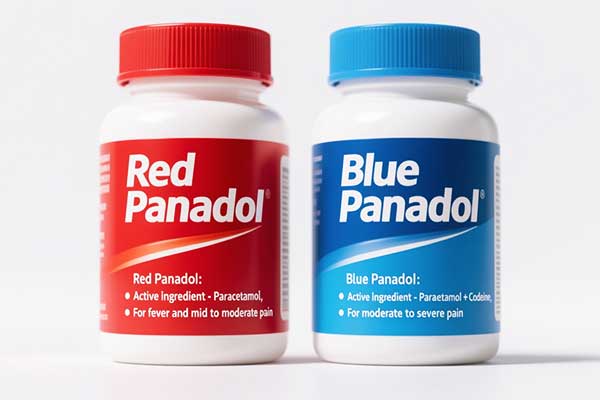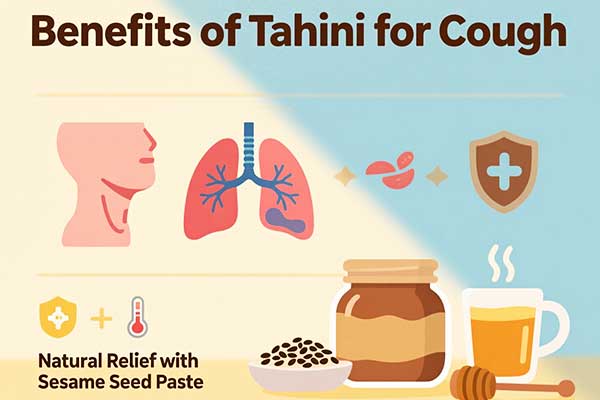Diet for Weight Gain Blood Type O
Complete Scientific Guide 2024: Evidence-Based Nutrition Plan
Overview & Key Benefits
Quick Summary
The blood type O diet for weight gain focuses on high-protein foods, lean meats, and specific vegetables while avoiding grains, dairy, and legumes that may hinder weight gain efforts. This approach is based on the theory that blood type O individuals have optimal protein metabolism and require animal-based proteins for healthy weight gain.
Key Benefits
- Enhanced muscle protein synthesis
- Optimized metabolism for protein utilization
- Improved cardiovascular health
- Enhanced immune system function
Target Outcomes
- Healthy weight gain (1-2 lbs per week)
- Increased lean muscle mass
- Enhanced energy levels
- Improved digestive health
Scientific Foundation of Blood Type O Diet
Blood Type O Characteristics
Metabolic Profile
Type O individuals are believed to have efficient protein and fat metabolism, making them well-suited for high-protein diets that support weight gain.
Digestive Efficiency
Strong digestive systems that thrive on meat and fish while potentially struggling with grains and dairy products.
Exercise Response
Best results with intense physical exercise combined with animal proteins for muscle building and weight gain.
Research Considerations
Scientific Limitations
Current scientific evidence does not fully support blood type-specific dietary recommendations. However, the high-protein approach may benefit many individuals seeking weight gain.
Daily Protein Requirements for Weight Gain
Best Foods for Blood Type O Weight Gain
Lean Meats & Protein
- Beef – 26g protein per 100g
- Lamb – 25g protein per 100g
- Turkey – 29g protein per 100g
- Chicken – 31g protein per 100g
- Organ meats – High in nutrients
Seafood & Fish
- Salmon – 25g protein + omega-3
- Tuna – 30g protein per 100g
- Mackerel – 26g protein + healthy fats
- Sardines – 25g protein + calcium
- Cod – 18g protein, lean option
Beneficial Vegetables
- Broccoli – High fiber + vitamins
- Spinach – Iron + folate rich
- Kale – Nutrient-dense superfood
- Sweet potatoes – Complex carbs
- Turnips – Low calorie, high nutrition
Nuts, Seeds & Healthy Fats
Recommended Nuts:
- Walnuts – 15g protein per 100g + omega-3
- Almonds – 21g protein per 100g
- Hazelnuts – 15g protein per 100g
Beneficial Seeds:
- Pumpkin seeds – 19g protein per 100g
- Sunflower seeds – 21g protein per 100g
- Flax seeds – 18g protein + fiber
Weight Gain Friendly Fruits
Bananas
105 calories + potassium
Pineapple
Digestive enzymes
Mangoes
107 calories + vitamins
Grapes
Natural sugars
Meal Plans & Weight Gain Strategies
Sample Daily Meal Plan (3,200+ Calories)
Breakfast (650 cal)
- • 3 eggs scrambled (210 cal)
- • 2 slices turkey bacon (70 cal)
- • 1 medium banana (105 cal)
- • 1 cup spinach sautéed (41 cal)
- • 2 tbsp olive oil (240 cal)
Mid-Morning (450 cal)
- • Protein smoothie with:
- – 1 cup almond milk (40 cal)
- – 1 scoop protein powder (150 cal)
- – 1 tbsp almond butter (95 cal)
- – 1/2 cup mango (107 cal)
- – 1 tbsp flax seeds (55 cal)
Lunch (800 cal)
- • 6 oz grilled salmon (350 cal)
- • 1 cup roasted sweet potato (180 cal)
- • Large spinach salad (50 cal)
- • 2 tbsp olive oil dressing (240 cal)
Afternoon (380 cal)
- • 1/4 cup mixed nuts (185 cal)
- • 1 cup pineapple chunks (82 cal)
- • 2 tbsp pumpkin seeds (113 cal)
Dinner (900 cal)
- • 8 oz lean beef steak (600 cal)
- • 2 cups steamed broccoli (55 cal)
- • 1 tbsp butter for vegetables (100 cal)
- • Mixed green salad (30 cal)
- • 2 tbsp olive oil (240 cal)
Evening (320 cal)
- • Protein shake with:
- – 1 scoop whey protein (150 cal)
- – 1 cup coconut milk (70 cal)
- – 1 cup berries (85 cal)
- – 1 tbsp coconut oil (120 cal)
Proven Weight Gain Strategies
-
Eat More Frequently: 6-7 small meals daily instead of 3 large ones
-
Focus on Calorie-Dense Foods: Choose nutrient-rich, high-calorie options
-
Prioritize Protein: Aim for 25-30g protein per meal for muscle building
-
Stay Hydrated: But avoid drinking too much before meals
Exercise & Lifestyle Tips
-
Strength Training: 3-4 times per week focusing on compound movements
-
Adequate Rest: 7-9 hours of quality sleep for muscle recovery
-
Limit Cardio: Keep intense cardio minimal during weight gain phase
-
Track Progress: Monitor weight, measurements, and strength gains
Foods to Limit or Avoid
Important Note
According to blood type O diet theory, certain foods may interfere with weight gain efforts by affecting metabolism and digestion. However, individual tolerance varies.
Grains & Starches
- Wheat products – May cause inflammation
- Corn – Can lead to weight gain issues
- Oats – May affect metabolism
- Processed breads – Low nutritional value
Alternative: Choose quinoa, rice, or sweet potatoes instead
Legumes & Beans
- Kidney beans – May hinder weight gain
- Navy beans – Digestive issues
- Lentils – May cause weight gain plateau
- Black beans – Can affect metabolism
Alternative: Focus on animal proteins and nuts for protein needs
Dairy Products
- Cow’s milk – May cause digestive issues
- Cheese – Can lead to inflammation
- Yogurt – Limited amounts may be okay
- Ice cream – High sugar + dairy
Alternative: Use almond milk, coconut milk, or other plant-based options
Additional Foods to Limit
Vegetables to Limit:
- • Cabbage – May interfere with thyroid
- • Brussels sprouts – Can cause digestive issues
- • Cauliflower – May affect metabolism
- • Potatoes – High glycemic index
Beverages to Avoid:
- • Alcohol – Empty calories, affects recovery
- • Cola drinks – High sugar, no nutrients
- • Coffee (excessive) – May increase stress hormones
- • Processed juices – High sugar content
Supplements & Additional Tips
Beneficial Supplements
Whey Protein Powder
25-30g per serving, ideal post-workout for muscle synthesis
Creatine Monohydrate
3-5g daily, supports muscle growth and strength gains
Omega-3 Fish Oil
1-2g EPA/DHA daily, reduces inflammation and supports recovery
Vitamin D3
2000-4000 IU daily, essential for muscle function and bone health
Important Consultation Note
Always consult with a healthcare provider before starting any supplement regimen, especially if you have underlying health conditions.
Pro Tips for Success
Meal Timing Strategy
Eat every 2-3 hours to maintain consistent nutrient intake and avoid feeling overly full.
Food Preparation
Batch cook proteins and prepare healthy snacks in advance to ensure consistent eating habits.
Progress Tracking
Monitor weekly weigh-ins, body measurements, and strength improvements. Consider using apps like natural weight gain methods for comprehensive tracking.
Digestive Health
Incorporate digestive aids like yogurt with garlic benefits to support gut health and nutrient absorption.
Alternative Protein Sources
Consider plant-based options like soya bean powder for weight gain as supplementary protein sources.
Daily Success Checklist:
Scientific Research & Evidence
Research Perspective
While the blood type diet has gained popularity, current scientific evidence does not fully support blood type-specific dietary recommendations. However, the high-protein approach recommended for type O individuals aligns with established nutrition science for muscle building and healthy weight gain.
Supporting Research
High-Protein Diet Benefits
Multiple studies confirm that protein intake of 1.6-2.2g per kg body weight supports muscle protein synthesis and weight gain.
Individual Metabolic Variations
Research shows significant individual differences in nutrient metabolism, supporting personalized nutrition approaches.
Protein Quality & Weight Gain
Animal proteins provide complete amino acid profiles essential for optimal muscle protein synthesis.
Research Limitations
Limited Blood Type Studies
A 2013 systematic review found no scientific evidence supporting the claimed benefits of blood type-specific diets.
Need for More Research
Current studies have not specifically validated the connection between ABO blood types and dietary response patterns.
Individual Variation
Genetic, environmental, and lifestyle factors may be more significant than blood type in determining optimal diet.
Evidence-Based Recommendations
Individual Assessment
Consider personal health history, food tolerances, and metabolic responses rather than blood type alone.
Professional Guidance
Consult with registered dietitians or healthcare providers for personalized nutrition plans.
Monitor Results
Track your response to dietary changes and adjust based on actual outcomes rather than theory alone.
Frequently Asked Questions
Healthy weight gain typically ranges from 1-2 pounds per week when following a structured high-protein diet. This rate allows for muscle building while minimizing excess fat gain. Factors like starting weight, activity level, and individual metabolism will influence results. Remember that initial weight gain may be higher due to increased glycogen and water retention.
According to blood type O diet theory, dairy products should be limited as they may cause digestive issues and interfere with weight gain efforts. However, individual tolerance varies significantly. Some people with type O blood can consume dairy without problems. Consider alternatives like almond milk, coconut milk, or small amounts of goat’s milk if you tolerate them well. Always listen to your body’s response.
Whey protein isolate or concentrate are excellent choices for type O individuals, as they’re derived from dairy but processed to remove most lactose and casein. Plant-based options like pea protein, hemp protein, or beef protein powder can also be beneficial. Look for products with minimal additives and aim for 25-30g protein per serving. Consider timing your protein intake around workouts for optimal muscle building benefits.
Current scientific evidence does not support blood type-specific dietary recommendations. A 2013 systematic review found no studies validating the blood type diet’s claims. However, the high-protein approach recommended for type O aligns with established nutrition science for muscle building and weight gain. Focus on the proven benefits of adequate protein intake, balanced nutrition, and individual food tolerance rather than blood type theory alone.
Gradually increase protein intake over 2-3 weeks to allow your digestive system to adapt. Include digestive enzymes or probiotics to support gut health. Ensure adequate fiber intake from vegetables and fruits. Stay well-hydrated and consider incorporating digestive-supporting foods into your meals. If issues persist, consult with a healthcare provider to rule out underlying digestive conditions.
Absolutely! Strength training is highly recommended alongside a high-protein diet for optimal weight gain results. Focus on compound movements like squats, deadlifts, and bench presses 3-4 times per week. The combination of adequate protein intake (25-30g per meal) and resistance training maximizes muscle protein synthesis. Ensure proper rest between sessions and consume protein within 30 minutes post-workout for best results.
Start with smaller, more frequent meals (6-7 per day) rather than forcing large portions. Include calorie-dense foods like nuts, nut butters, avocados, and healthy oils. Liquid calories from smoothies and protein shakes can be easier to consume. Set eating reminders on your phone and prepare meals in advance. Consider natural appetite stimulants and consult with a registered dietitian if appetite issues persist.
Rapid weight gain (more than 2-3 pounds per week) can lead to excessive fat accumulation, digestive stress, and potential health complications. Aim for gradual, sustainable weight gain of 1-2 pounds weekly. Monitor for symptoms like digestive discomfort or breathing difficulties. Regular check-ups with healthcare providers are important, especially if you have underlying health conditions. Focus on nutrient-dense calories rather than empty calories for healthier weight gain.
Key Takeaways & Next Steps
Essential Points to Remember
- High-protein intake (25-30g per meal) is crucial for healthy weight gain
- Focus on calorie-dense, nutrient-rich foods over empty calories
- Individual tolerance matters more than blood type theory
- Combine proper nutrition with strength training for optimal results
Your Action Plan
Week 1-2: Foundation
Establish meal timing, increase protein intake gradually, start tracking calories
Week 3-4: Optimization
Add strength training, fine-tune meal plans, monitor progress
Month 2+: Consistency
Maintain routine, adjust based on results, consider professional guidance
Related Resources
Explore more evidence-based nutrition guides on our website:
Remember: Individual results may vary. Always consult with healthcare professionals for personalized advice.






